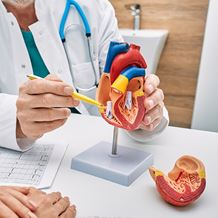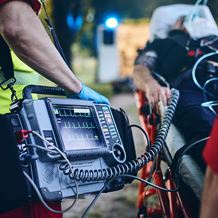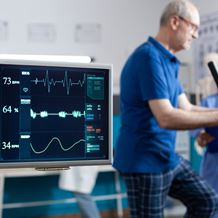
- Home
- Services
- Cardiac Services
- Recovery
- Transoesophageal Echocardiogram (TOE) Recovery
Transoesophageal Echocardiogram (TOE) Recovery
A transoesophageal echocardiogram, also referred to as TOE, is typically performed using a mild sedative to help you relax. A special ultrasound scanner is attached to a flexible tube that is gently inserted down the back of your throat. This enables your doctor to closely examine the structure and function of your heart, and determine whether you are at risk of any type of heart disease or blood clotting. It also enables your doctor to assess the health of your heart valves and heart muscle. This type of examination produces much clearer results than a traditional echocardiogram as there is no interference from the ribs or lungs. A transoesophageal echocardiogram can take up to 40 minutes, and is generally considered low risk. It is a useful way to find out more about the health of your heart with most patients able to make a return to their normal activities within a few days. Recovery looks different for all patients, and our specialist rehabilitation team are here to support you at every step. Please ask about our dedicated cardio rehabilitation program that you can access through your hospital.
Home preparation for transoesophageal echocardiogram
There are some useful ways to prepare for your return home after your TOE.
- Organise someone to help you home from hospital as you won’t be allowed to drive for 24 hours
- Set up a comfortable area at home where you can rest and recover as you may feel tired
- Place necessary items close by such as your phone, remote control, glasses etc
- Have some throat sweets on hand as you may have a sore throat for a few days afterwards
- Arrange to have some help at home with daily tasks while you recover
Your recovery from transoesophageal echocardiogram
After the surgery is complete, you will spend some time in recovery before being discharged. Some patients may be required to spend slightly longer in hospital, but patients are typically discharged one or two days after the procedure. It is normal to see a slight bulge under the skin where the pacemaker has been implanted, and there may be some bruising at the incision site which should go away after a few weeks. The wound is protected by a special dressing, and your doctor may recommend keeping your arm immobilised in a sling to help with your recovery while you heal. Although you are likely to be able to return to your usual routine within a few days, driving is not permitted until advised by your doctor and any strenuous activity should be avoided until cleared by your medical team. You will be given specific information about the make and model of your pacemaker, as well as any necessary precautions. Attending regular follow-up appointments as advised by your doctor is an important part of the recovery process, and essential to ensuring that your pacemaker continues to function effectively.
What to look out for at home
A transoesophageal echocardiogram is generally considered a low-risk medical procedure. Some patients may experience a sore throat for a few days afterwards, as well as tiredness and nausea. There may also be some bruising at the insertion site but this is likely to disappear within a few days and is considered completely normal. Talk to your doctor if you experience any ongoing discomfort, blood in your saliva or heart-related symptoms that are related to your medical condition.
Average recovery timeline
In Recovery
- Your heart, blood pressure and breathing will be monitored
- When you wake from the anaesthetic and feel more alert, the supportive medical equipment will be removed
- A sip test will determine whether your gag reflex has returned, and you are able to eat and drink
- You may feel tired and groggy for the remainder of the day
- Your doctor will advise when your results are ready to be reviewed
At Home
- As driving is not allowed for 24 hours, you will need help getting home from hospital
- Arrange for a friend to stay with you at home while you recover
- Your throat may feel sore for the first few days
- Use cough sweets or lozenges to soothe any throat discomfort
- Avoid any smoking, alcohol or hot drinks for 24 hours
- Contact your doctor if there is blood in your saliva or phlegm for longer than 24 hours
- You should feel able to return to your usual daily routine the following day
Transoesophageal Echocardiogram (TOE) Recovery FAQs
What's next?
If you have been experiencing heart-related symptoms, book an appointment with our cardiac services specialist today.
Our specialists in Cardiac Services
View all specialists
Related content

Cardiac Services
Cardiology services at St Vincent’s Private Hospitals, advanced cardiac care.
Read More
Heart Failure
A condition that develops when your heart is unable to pump enough blood around your body.
Read More
Recovery
Cardiac recovery and rehabilitation programs are designed to help you after surgery.
Read More

